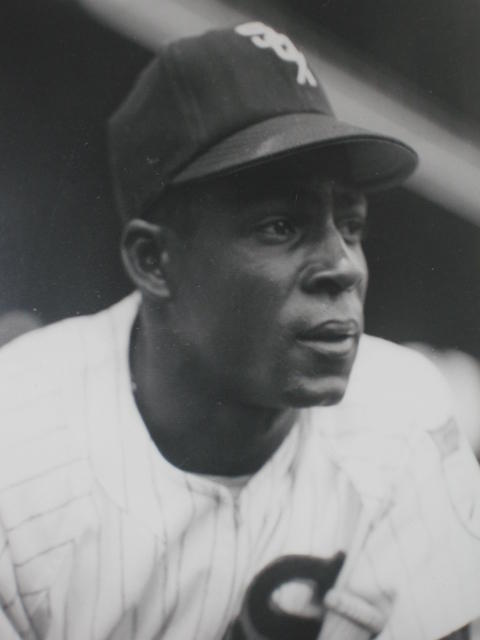By Roger Wallenstein
The wearing of Jackie Robinson’s number 42 on Friday night was a nice touch in a week that sorely needed one. Amidst dropped fly balls, Juan Pierre’s five consecutive base-stealing failures, an anemic offense, Gavin Floyd’s wild pitches, lots of errors, and the woeful bullpen travails, MLB honored its 64th anniversary of integration and the legacy of Jackie Robinson as all big-leaguers wore his number in ballparks throughout America.
If you’re interested in reading a definitive account of Jackie Robinson, try Arnold Rampersad’s 1997 biography. It is an honest, detailed, and fascinating account, not only of Robinson’s life but also the times in which he lived.
Dodger general manager Branch Rickey and future Sox owner Bill Veeck saw the value and wisdom of signing African-Americans a number of years before it finally happened. Veeck claimed that his quest to buy the Phillies during World War II was blocked by the owners and commissioner when they suspected (not without a healthy dose of truth) that he wanted to sign black players.
In 1947 when Bill owned the Cleveland Indians, Larry Doby made his debut as the American League’s first black player 81 days after Robinson on July 5. Robinson achieved eternal recognition and fame since he came first, but Doby and others experienced the same indignities and hardships and still managed to perform at a high level.
Doby, a Hall of Famer, had quite a career, including two productive seasons (1955-56) with the Sox. Veeck later hired him to manage the team in 1978 after Bob Lemon skipped town to manage the Yankees.
Rickey, one of baseball’s first general managers, clearly realized it was past time to exclude African-Americans and Rampersad does a solid job of describing why Rickey chose Robinson. Among other assets, Jackie was a college guy, he had served in the military, and – lest I’m remiss – he could run, hit, field, throw, and hit for power. The debut of Jackie Robinson goes beyond the altruistic. Rickey wanted to win ballgames, and the likes of black players like Robinson, Don Newcombe, Roy Campanella, Junior Gilliam, Joe Black, and Sandy Amoros helped Brooklyn/Los Angeles win five National League pennants in the 1950’s.
Contrast that to the Red Sox, the last team to sign a black player, Elijah (Pumpsie) Green in 1959. They finished no higher than third during the decade despite the presence of Ted Williams.
The White Sox were the seventh of the 16 Major League teams to integrate. General manager “Trader” Frank Lane, who bartered players as often as Sarah Palin says something silly, brought Minnie Miñoso over from Cleveland for the 1951 season. Sure, Minnie was Cuban, but he also was very black, and prior to 1947, he had no chance to play in the big leagues.
All Minnie did was hit .324 in his inaugural season on the South Side, which was a preview of seasons to come. He led a resurgent franchise in its struggle to overtake the Yankees each summer. Ironically it only happened once – in 1959 – and at that time Minnie was back in Cleveland, a weird turn of events in Sox history. However, Miñoso came back to the South Side in yet another trade prior to the 1960 campaign to play a total of nine seasons for the South Siders.
Phil Rogers had a delightful column in the Tribune prior to Opening Day when Minnie threw out the first ball. In addition, my lifelong friend, videographer Tom Weinberg, is in the beginning stages of producing a 60-minute documentary on Miñoso which will air on WTTW with hopes that it will get national exposure. I’ll keep you posted.
Minnie’s likeness now resides on the left centerfield wall at The Cell as well as on my kitchen wall to remind me that once I was young, that it’s important to hustle, and always take the extra base if the opportunity presents itself.

Now in his 80’s, Miñoso remains fit and energetic. That is, until the past week when he was at The Cell for a couple of games which made many of us ill. Ozzie Guillen obviously was suffering physically on Wednesday after the bullpen surrendered six runs in the 9th and 10th innings to turn John Danks’ strong performance into a 7-4 loss to Oakland. Chris Sale couldn’t get anyone out, and Matt Thornton gave up a ninth inning two-out, two-run single to Cliff Pennington – he of the .211 average – to tie the game.
Juan Pierre had made two errors in his last 252 games prior to this season, yet he dropped two fly balls in four nights, resulting in two losses. Then Pierre leaps above the wall to take a home run away from the Angels on Friday night. How do you explain that?
Or the 15 errors in 14 games or six blown saves?
Now the team hits the road, and they better get comfortable since 30 of the next 43 games will be out of town. The adage “Break even on the road and win two-out-of-three at home” may have to be reversed after the disappointing 4-6 homestand.
On the bright side: It’s only April. The Twins are doing even worse with Joe Nathan, coming off arm surgery, blowing two saves and losing the closer role. The Sox are chasing Kansas City and Cleveland and, c’mon, they can’t keep it up. Let them have their fun now.
Jake Peavy keeps getting closer to coming back. Matt Thornton can’t be this bad. Besides, Hawk pointed out a couple of times Sunday that the Angels also swept the Sox in a three-game series in 2005, and we all know how that season ended. The boys will start hitting again, and it’s going to get warmer. Patience, Sox fans, patience.
–
Comments welcome.
Posted on April 18, 2011


